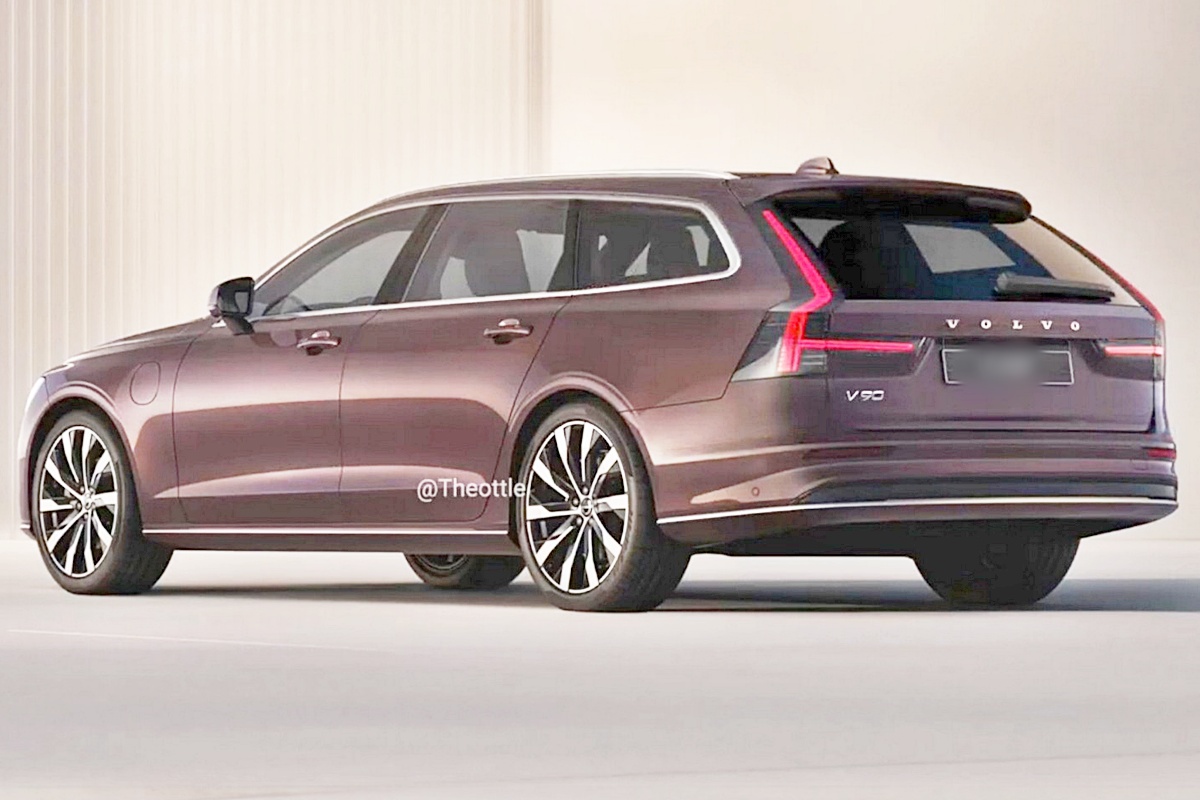
Volvo’s recent facelift of its flagship sedan, the S90, has been followed by a virtual rendering of the V90 station wagon, which has generated significant attention. Unfortunately, this V90 is not an actual production model; it is a digital rendering created by YouTube artist Theottle. Nevertheless, this sleek and sophisticated design captured the attention of many consumers.
Volvo has adopted a design language similar to that of the XC90 with the facelift of the S90. Production of the actual V90 will end this September, making it unlikely that we will see a V90 with a design like the one in the rendering on the roads.

Featuring the XC90 Style
A High-Quality Rendering
This rendering was created based on the same design philosophy as the S90 facelift. The slimmer LED matrix headlights, newly refined grille, and stylish taillight design leave a more polished impression. Details like the bumper, fenders, hood, and wheels have also been extensively updated, blending the flagship model’s elegance with sporty characteristics.
The new S90 enhances its interior appeal with a large 11.2-inch display that supports over-the-air updates, improved sound insulation, and standard adaptive suspension. If these changes had been applied to the V90, they would likely have stirred fresh interest in the premium market currently dominated by SUVs.
The powertrain options include a 2.0L gasoline mild hybrid (front-wheel drive) and a plug-in hybrid (all-wheel drive), balancing practicality and eco-friendliness. The plug-in hybrid can travel approximately 80 km (approximately 50 miles) on electric power alone, making it ideal for urban driving.

Disappointment over the V90 Discontinuation
The problem is that this stunning V90 will not be released in reality. Following its strategy to strengthen its SUV lineup, Volvo plans to discontinue the V90, while the S90 is also withdrawing from the North American and European markets. As a result, traditional premium wagons, like the BMW 5 Series Touring and the Mercedes-Benz E-Class Estate, are gradually disappearing from the market.
This rendering holds more meaning than a mere concept. It modernizes Volvo’s design identity while maintaining practicality and elegance. If it had been produced, it would likely have been well-received. Hopefully, Volvo will consider reviving such genuinely Volvo-like models in its future electrification strategy.























